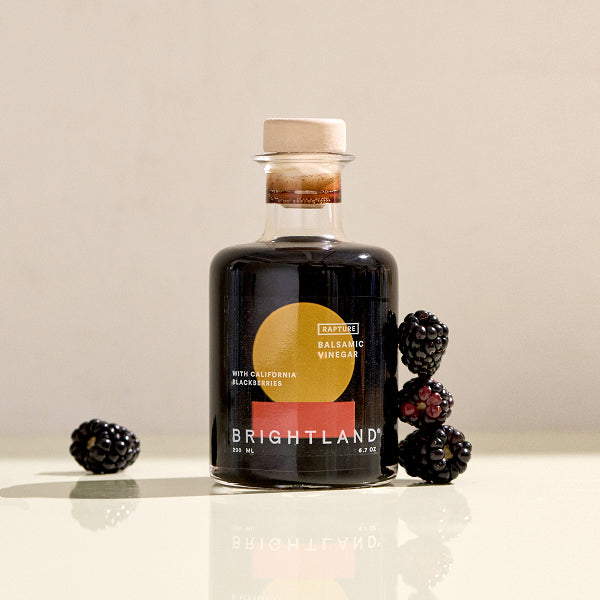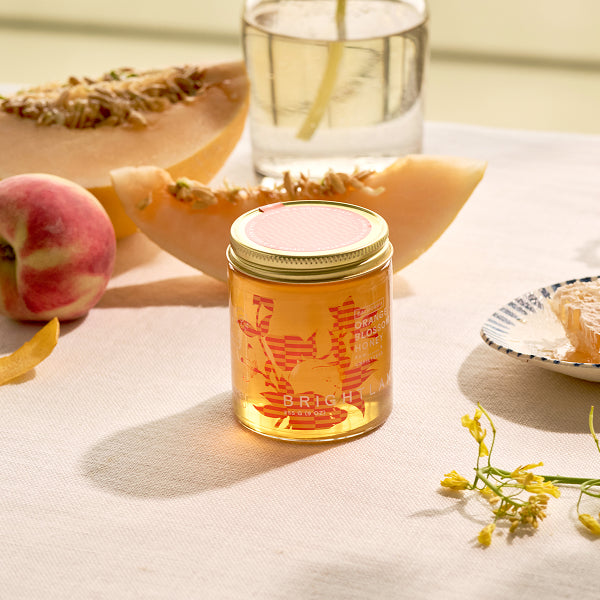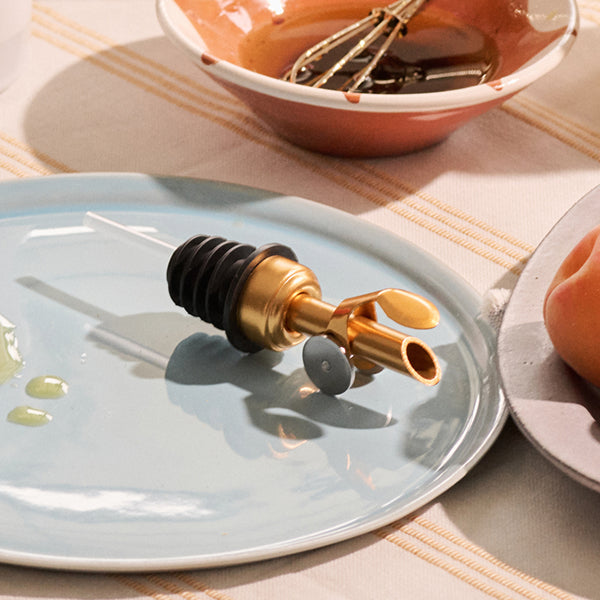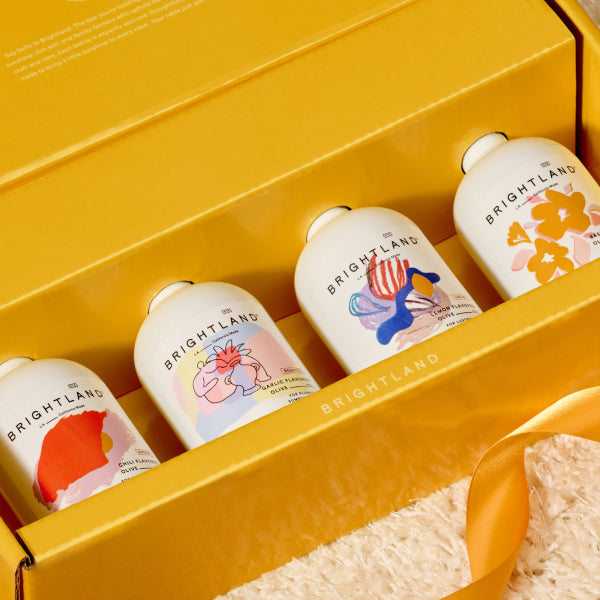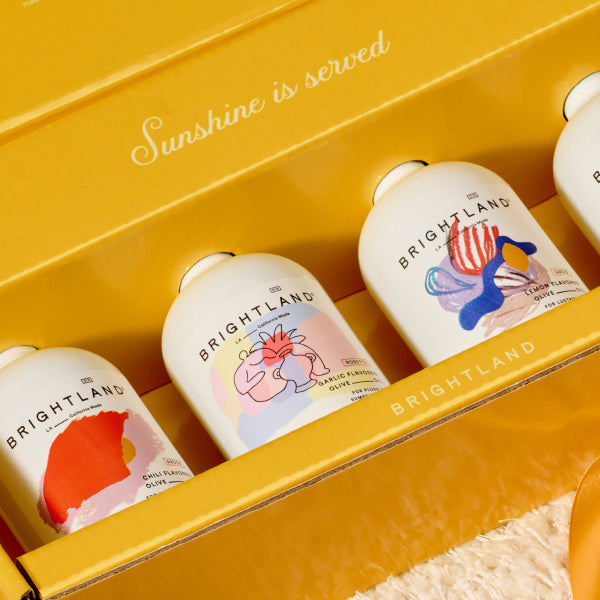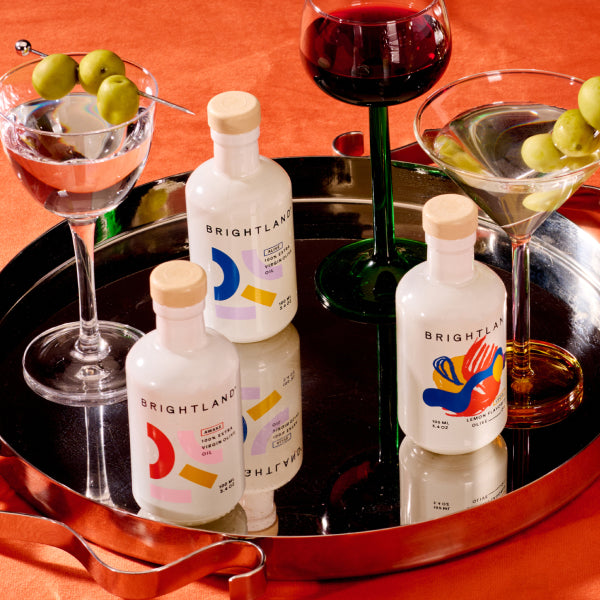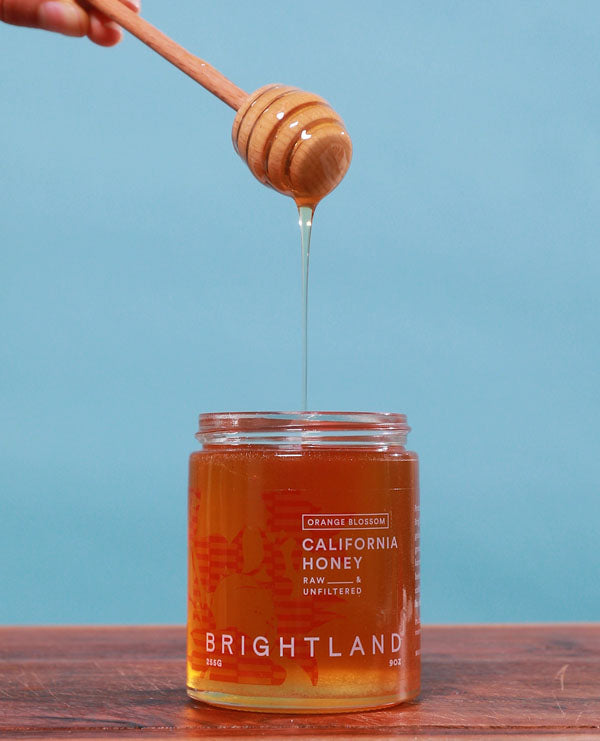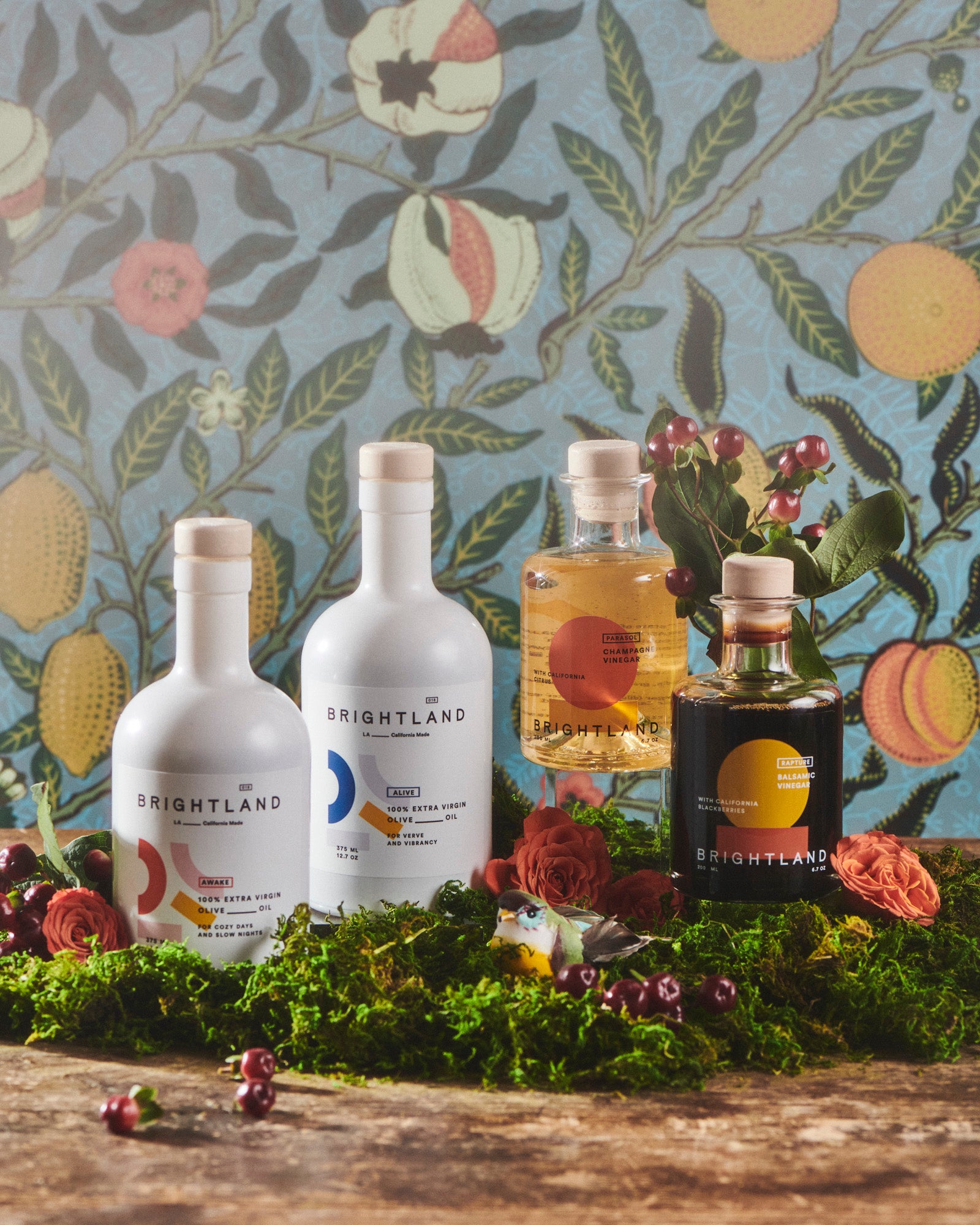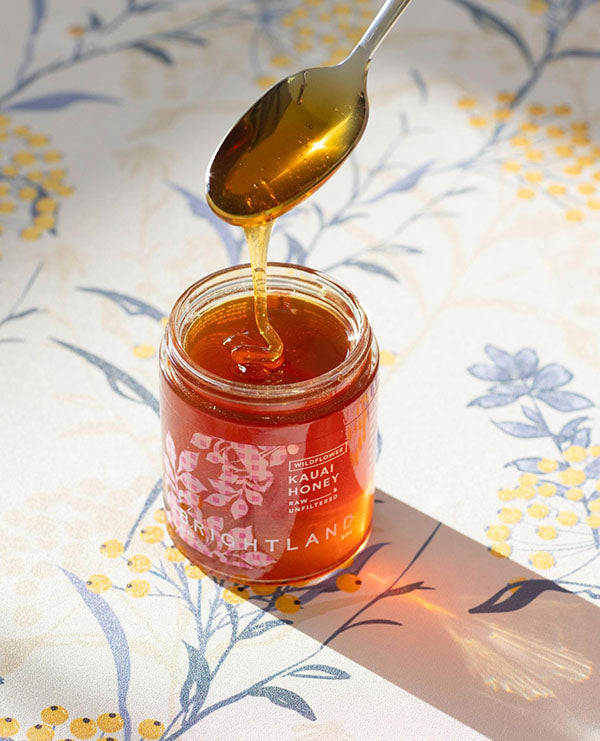[open type="rte"]

Once upon a time, there was only one type of honey on the grocery store shelf: regular honey. In the past few years, many different types of honey have come on the market, and one that is getting a lot of attention recently is raw honey. In this ultimate guide, we break down the difference between raw honey and regular honey, plus offer tips for shopping for raw honey.
[close type="rte"][open type="rte"]
Raw Honey vs. Regular Honey: The Main Differences
Here are the main differences between raw honey vs. regular honey, broken down into three main categories: post-harvest production processes, added sweeteners and nutritional benefits.
Processing
The main difference between raw honey and regular honey comes during the post-harvest production process (or lack thereof, in raw honey’s case). Raw honey might be strained after harvesting to remove bits of honeycomb and other debris, but that is usually it for any post-harvest processing.
On the other hand, regular honey usually goes through a variety of different processes after harvesting. At a minimum, it will be pasteurized by heating it to very high temperatures. The pasteurization process destroys microbes naturally present in foodstuffs, extending its shelf life and making it less likely to go off. While this is important with products that spoil quickly, such as milk, it is less necessary with honey, which naturally has a very long shelf life — and was in fact used as a preservative by ancient societies for that very reason. Pasteurization also helps keep regular honey liquid and can delay or prevent the crystallization process.
[close type="rte"][open type="images" count="1"]

[close type="images"][open type="rte"]
Another processing step that regular honey may go through is filtration. Filtration removes the air bubbles from the honey, which gives it a smooth, uniform appearance that many consumers find aesthetically pleasing. An additional round of filtration, called ultrafiltration, may be used to make it even more transparent. Each of these additional filtration steps often removes enzymes and pollen that are key to the health benefits of honey. (Learn more about “What Is Raw Honey?” here.)
Added Sweeteners
Regular honey might not contain as much pollen as raw honey, but it might have some other ingredients — namely, added sugars. Commercial honey companies often add in sugar, syrup and other additives to sweeten the honey and make it go farther. This also lowers the cost and helps the company increase profits, another motivation for large companies to continue this practice.
Raw honey can be expensive, but it also gives you peace of mind because you know that you are getting 100 percent honey instead of a product cut with inferior ingredients. Besides raw honey, you might also see the “pure honey” label, which does not have added sweeteners but has been pasteurized, so keep that difference in mind as you shop.

Health Benefits
Raw honey usually offers more health benefits than regular honey due to the lack of processing (not to mention the absence of added sweeteners). The pasteurization and filtration processes can remove bee pollen, bee propolis, vitamins, minerals, enzymes, amino acids, antioxidants and other substances that provide nutritional benefits.
While more research needs to be done into raw honey vs. regular honey, we do have evidence that raw honey contains many beneficial substances and that pasteurization and similar processes remove nutritious compounds from other foods. Without these beneficial substances, you will not get the anti-inflammatory, antifungal and antibacterial benefits of honey. If you are consuming honey for its nutritional benefits, and not only its delicious taste, then you should consider selecting raw honey over regular honey.
Taste and Texture
Because of the differences in production, raw honey and regular honey often taste and look different from each other. Regular honey tends to be more transparent and offers a more standardized taste when compared to raw honey. This is especially true for large production by big commercial companies, which are designed to churn out many thousands of bottles of honey that look and taste identical.
Raw honey often has a cloudy appearance, since very small pieces of honeycomb cannot be removed without added filtration. This cloudy appearance may be further impacted by the crystallization process, which is more common in raw honey due to the absence of pasteurization. (Crystallization is very easy to reverse by gently heating a container of honey in a hot water bath.)
Raw honey also offers a variety of flavors because the different plants used to make the nectar impart a unique taste to the honey. Regular honey tends not to have as much flavor because the processing filters out much of the pollen, which is the main factor that contributes to the taste of honey.
[close type="rte"][open type="rte"]
Raw Honey vs. Organic Honey
Now that we have cleared up the differences between raw honey vs. regular honey, we also wanted to take a moment to touch on raw honey vs. organic honey, since many consumers are confused by these two labels. Most people associate organic food with being more healthy, so many assume that organic honey is equivalent to raw honey. However, this is not the case. Honey can be raw without being organic, and vice versa.

To be considered organic and use that label on its products, a bee farm must meet the USDA’s organic livestock standards. These standards do not affect the processing of the honey after it has been harvested from the beehives. The honey can be filtered or pasteurized (which would make it regular honey, not raw) and still meet the criteria for organic foodstuffs.
Now, there are certainly honeys available that are both organic and raw, but you cannot just assume that a honey is raw simply because it is organic. If a honey is marketed as organic, then carefully read the label to determine whether or not it is raw as well. Most labels will clearly state whether the honey is raw, organic or both, making it easy to determine exactly what you are getting. If the label is not clear about whether a honey is organic or raw, then proceed carefully.
[close type="rte"][open type="rte"]
Is Raw Honey Safe to Consume?
Both raw honey and regular honey can rarely contain very small amounts of the bacteria Clostridium botulinum, which is responsible for botulism poisoning. This bacteria can be found in soil and untreated water, and it may survive in preserved or canned foods that have been improperly stored.
Most adults and older children have a mature digestive system that can move these spores along and pass them before they can cause any damage to the body. However, very young children have not developed these defense mechanisms yet, which is why honey should not be given to children under 12 months of age. In fact, honey and corn syrup are the top causes of botulism poisoning in children.
That being said, if you are an adult, then you can eat honey without fear of botulism. Your digestive system is strong enough to protect you from these spores. Keep in mind that botulinum bacteria can be found in regular honey as well as raw honey, so all those pasteurization and filtration processes will not necessarily reduce the already small chances of it containing botulinum.
[close type="rte"][open type="rte"]
How to Shop for Raw Honey
There are so many honey varieties available at the local grocery store, not to mention the many more available online. How can you choose the perfect raw honey for you and your family? Here are our top tips for shopping for raw honey:

Read the label carefully.
Before purchasing a bottle of honey, you want to read the label to make sure that you are actually getting the product that you think you are. Remember that you are looking for raw honey specifically, not organic honey (which may be pasteurized and filtered) or pure honey (which has been pasteurized but not filtered). Also, read the back of the label to see how much information it contains. Generally speaking, the more transparent a honey company is about its product, the more confident you can be when buying it.
Do not get hung up on appearance.
Looks can be deceiving when it comes to honey. That crystal clear, beautifully colored mass market on the supermarket shelf might be cut with corn syrup and contain little bee pollen, even though it looks delicious. In fact, honey that has a cloudy appearance, or is opaque or cream-colored, is actually a good sign that it is raw and not filtered or pasteurized. Even though some people might find this less aesthetically pleasing, the added nutritional benefits — not to mention the improved flavor — are worth a little bit of cloudiness in your raw honey.
Think about what flavor you want.
Raw honey comes in many different flavors, which are reflected in the varying colors. For instance, our Couplet honey set features two distinct flavors: California Orange Blossom Honey and Kauai Wildflower Honey. The light amber-hued California Orange Blossom Honey is intensely floral with a clean citrus finish. Meanwhile, the deep amber-hued Kauai Wildflower Honey showcases the flavors of its wild Hawaiian sources, including hibiscus, eucalyptus, coffee trees, papaya trees, passion flowers and guava flowers. If you are not sure which honey flavors you prefer, then buy a few varieties and experiment around with them to see what you like and what you do not.
Consider the packaging.
[close type="rte"][open type="images" count="1"]

[close type="images"][open type="rte"]
Honey usually comes in plastic and glass packaging. Plastic packaging might be cheaper and slightly less prone to breakage, but it cannot be recycled. Plastic also cannot be heated up in boiling water, lest it melt, which means that you cannot leave the honey in plastic packaging if it crystallizes. You will have to transfer it to a glass container to melt it again. On the other hand, glass honey jars are infinitely recyclable and easy to warm up in a hot water bath if the honey does happen to crystallize. If given the choice, we recommend selecting a raw honey that comes in glass packaging.
Shop smaller brands and farms.
Unfortunately, most mass market honey that is available at the grocery store is not raw, and has even been cut with sugar, corn syrup and other added ingredients. Shopping at farmers markets, food co-ops and boutique brands such as Brightland ups your chances of getting a product that actually matches what the label says. Smaller operations — especially those located in the U.S. like our California farms — make it easier to exert quality control over the harvesting and bottling process, which translates to a more high-quality product. If you have always grabbed the cheapest bottle of honey on the supermarket shelf, it is time to branch out into some higher quality options.
If you are looking for a convenient way to expand your raw honey palate, then consider our raw honey set, The Couplet. Featuring two distinct flavors of raw honey, The Couplet is the perfect addition to any cook’s kitchen, whether they are an expert chef or a beginner who is just starting out.
Image Credits
Maksim M/Shutterstock.com
Paperly Studio/Shutterstock.com



